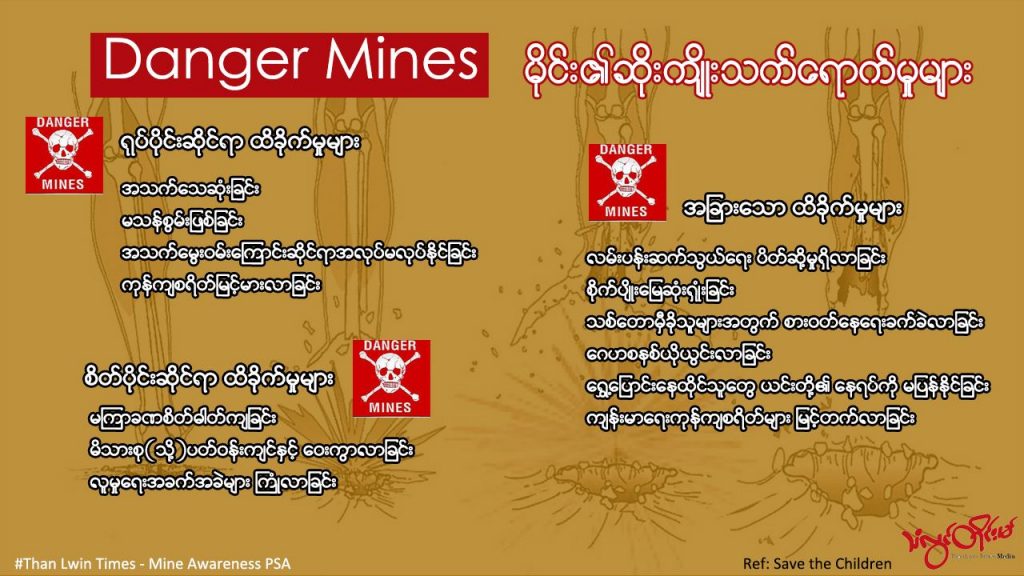Loikaw, April (30)
The military regime, which has been losing strength and territory due to the defiance of the anti-coup resistance forces, has mainly resorted to airstrikes to crack down on the revolutionary forces and gain the upper hand, while targeting civilians.
In 2023, after the state of emergency was extended, the junta army have been using the most deadly airstrikes against resistance forces, including civilian targets.
Worst of all, the military regime’s air strikes targeted schools, religious buildings, hospitals, dispensaries and public places.
Among these airstrikes, at least 170 people, including nearly 60 women and children, were killed in the incident that occurred on April 11 in Pa Zi Gyi village, Kanbalu Township, Sagaing Region.
CDM Captain Kung Thu Win said, “The junta aerial assaults and burning of villages are the worst fear instilling into the people and are aimed at cutting off the support route for the revolutionary forces”.
The military council, which extended the state of emergency for six months on January 31 this year on the grounds that the country is not in a normal situation, has launched more airstrikes in battles across the country.
Since late February, the military council has been conducting heavy offensives to suppress the states of Kachin, Kayah, Karen and Chin , and Upper Myanmar regions of Sagaing and Magwe, where the revolutionary forces are strong, mainly using airstrikes.
Ko Phyo, KNDF Information Officer, said, “The military council suffered heavy losses in the battle in Kayah state, and the fighter jet took off as soon as the gunshots were heard”.

The junta army has been stepping up its airstrikes on a daily basis and testing new incendiary bombs since the coup leader threatened to take strong action against some ethnic armed groups supporting the NUG and PDF.
According to information collected by Than Lwin Times, the military council carried out at least 300 airstrikes across the country, in February, March and April, when the state of emergency was extended, notably conducting joint ground and air operations.
CDM Sergeant Zeya from the Air Defense Force said, “The military council has been using airstrikes without distinguishing between revolutionaries and civilians to crush those who do not support them. They are likely to deploy more forces in strategic locations, such as Karenni State.
According to statements by the National Unity Government (NUG), the military council has carried out at least 650 airstrikes, killing hundreds of civilians in the two years since the military coup.
The regime troops’ deadly airstrikes in Anampa village in Phakant Township, Kachin State; Falang and Thantlan Townships in Chin State; and Latyet Kone village and Yin Paung Tai and in Sagaing Region’s Dabayin Township resulted in the mass killing of civilians.
According to U Naing Htoo Aung, Permanent Secretary of the NUG Defense Ministry, “US$ 800,000 has been spent on countering the military council’s air strikes, and the troops have also been equipped with some weapons. We are in a position to deter the military council’s air strikes to some extent”.
However, the NUG Ministry of Defense has refused to reveal what weapons it has used in response to airstrikes. The CDM captain community points out that the NUG’s air defense budget of $800,000 is not enough.
Meanwhile, junta increased the defense budget for fiscal year 2023-2024 to over 5,600 billion Kyats. According to military sources, the junta has designated 2023 as the year of Air Force Special Operations.
On the other side, the military council has imposed martial law in 44 townships throughout eight regions and states, and more than a third of the nation is in turmoil.
The United Nations Office for the Coordination of Humanitarian Affairs (UNOCHA) announced on April 19 that nearly 1.5 million people have fled the conflict and insecurity driven by the latest coup in Myanmar.
News – Than Lwin Times
Photo: AFP

